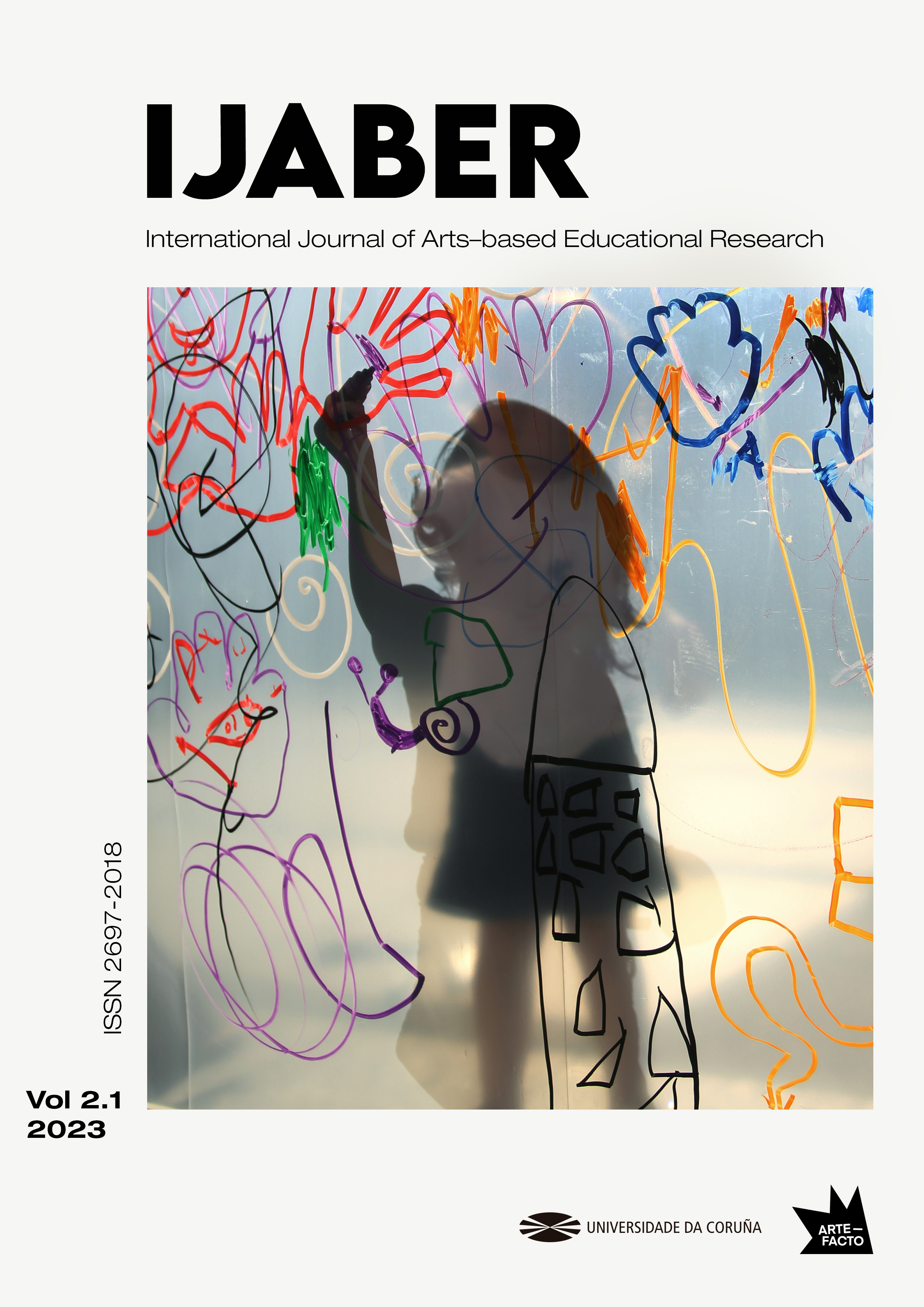Museum concept from a teaching perspective
Main Article Content
Abstract
Abstract: This article deals with the conceptualization of the museum from the teaching experience and based on a specific practice carried out at the Faculty of Education of Campus María Zambrano (UVa) in collaboration with the construction and demolition waste recycling center "AR Los Huertos" during the 2021/2022 academic year. This experiential conceptualization is carried out using the a/r/tographic method and through photographic pairs. The main results obtained present the museum as a starting point for the development of didactic experiences in formal contexts, offering flexibility to artistic creation applied to the educational field. A more embodied experience in the museum is advocated, and the need to include other voices in the museum narration is proposed, as well as the interest as a resignifying element within culture.
Keywords:
Downloads
Article Details
References
Camps, A. (2002). El aula como espacio de investigación y reflexión.
Investigaciones en didáctica de la lengua. Graó. Barcelona.
Candel, T.U. (2022). Report on the expanded classroom: university–museums
performative action project. Artseduca (31), pp. 179-189.
Defez, A. (2005). ¿Qué es una creencia? Logos. Anales del Seminario de
Metafísica, 28, pp. 199-221. https://revistas.ucm.es/index.php/ASEM/article/view/
ASEM0505110199A/15904
Díaz, C., Martínez, P., Roa, I. y Sanhueza, M.G. (2009). Los docentes en la sociedad
actual: sus creencias y cogniciones pedagógicas respecto al proceso didáctico. Polis,
, (25), pp. 421-436. https://www.scielo.cl/pdf/polis/v9n25/art25.pdf
Garzón, A. (1989). Creencias, esquemas y acciones significativas del contexto social.
En Rodríguez, A. y Seoane, J. (Coords.), Creencias, Actitudes y Valores (pp. 141-
, Madrid: Alhambra. https://www.uv.es/seoane/publicaciones/Creencias%20
Actitudes%20y%20Valores.pdf
Gómez- Redondo, C. y Borghi, B. (2020). El uso de la expresión plástica en los
museos de Bolonia. Clío History and history teaching, 46, 188-201. https://papiro.
unizar.es/ojs/index.php/clio/article/view/5270/4404
Hernández-Hernández, F. (2008). La investigación basada en las artes. Propuestas
para repensar la investigación en educación. Educatio siglo XXI, 26, pp .85-118.
https://revistas.um.es/educatio/article/view/46641
Marín, R. y Roldán, J. (2019). A/r/tografía e Investigación Educativa Basada en Artes
Visuales en el panorama de las metodologías de investigación en Educación Artística.
Arte, Individuo y Sociedad, 31 (4), pp. 881-895. https://revistas.ucm.es/index.php/
ARIS/article/view/63409/4564456551730
Marín, R. y Roldán, J. (2017). Ideas Visuales. Investigación Basada en Artes e
investigación artística. Granada: Universidad de Granada.
Marín, R., Roldán, J. y Genet, R. (2017). Pares fotográficos en investigación Basada
en Artes e Investigación Artística, En Marín, R., Roldán, J. (Eds.) Ideas Visuales.
Investigación Basada en Artes e investigación artística. Pp. 70-85. Granada:
Universidad de Granada.
Marín, R. (2005). La ‘Investigación Educativa Basada en las Artes Visuales’ o
‘ArteInvestigación Educativa’. En. Marín, R. (Ed.). Investigación en Educación Artística
(223-274). Granada: Universidad de Granada y Universidad de Sevilla.
Mesías-Lema, J.M. (2018). Artivism and social conscience: Transforming teacher
training from a sensibility standpoint. Comunicar, 26 (57), pp. 19-28. https://www.
revistacomunicar.com/verpdf.php?numero=57&articulo=57-2018-02







